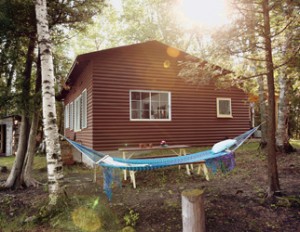Still lazy after all these years
Whether it’s a humble shack or a luxurious lodge, your cottage should be a place where you’re not afraid to track dirt on the floor.
Advertisement
Whether it’s a humble shack or a luxurious lodge, your cottage should be a place where you’re not afraid to track dirt on the floor.
 We’re a mostly city-dwelling people, but for many Canadians, the heart resides at the cottage. When it comes to living—really living—we jump in our SUVs and head for that special, magical place by the lake. Once there we spend our days swimming, fishing, paddling and water skiing. And when the sun dips below the horizon we sit by the fire, a glass of red wine in hand, and watch the stars light up the night sky.
Of course, not all cottages are created equal. Some are vast and opulent edifices with indoor plumbing, outdoor Jacuzzis, $10,000 stereo systems and the latest appliances and furnishings. Others are mere one-room shacks with propane lights, wood stoves and treks to the outhouse for nocturnal ablutions. Whatever your taste and budget, there’s an endless array of options for equipping and furnishing your particular piece of paradise.
We’re a mostly city-dwelling people, but for many Canadians, the heart resides at the cottage. When it comes to living—really living—we jump in our SUVs and head for that special, magical place by the lake. Once there we spend our days swimming, fishing, paddling and water skiing. And when the sun dips below the horizon we sit by the fire, a glass of red wine in hand, and watch the stars light up the night sky.
Of course, not all cottages are created equal. Some are vast and opulent edifices with indoor plumbing, outdoor Jacuzzis, $10,000 stereo systems and the latest appliances and furnishings. Others are mere one-room shacks with propane lights, wood stoves and treks to the outhouse for nocturnal ablutions. Whatever your taste and budget, there’s an endless array of options for equipping and furnishing your particular piece of paradise.
Share this article Share on Facebook Share on Twitter Share on Linkedin Share on Reddit Share on Email